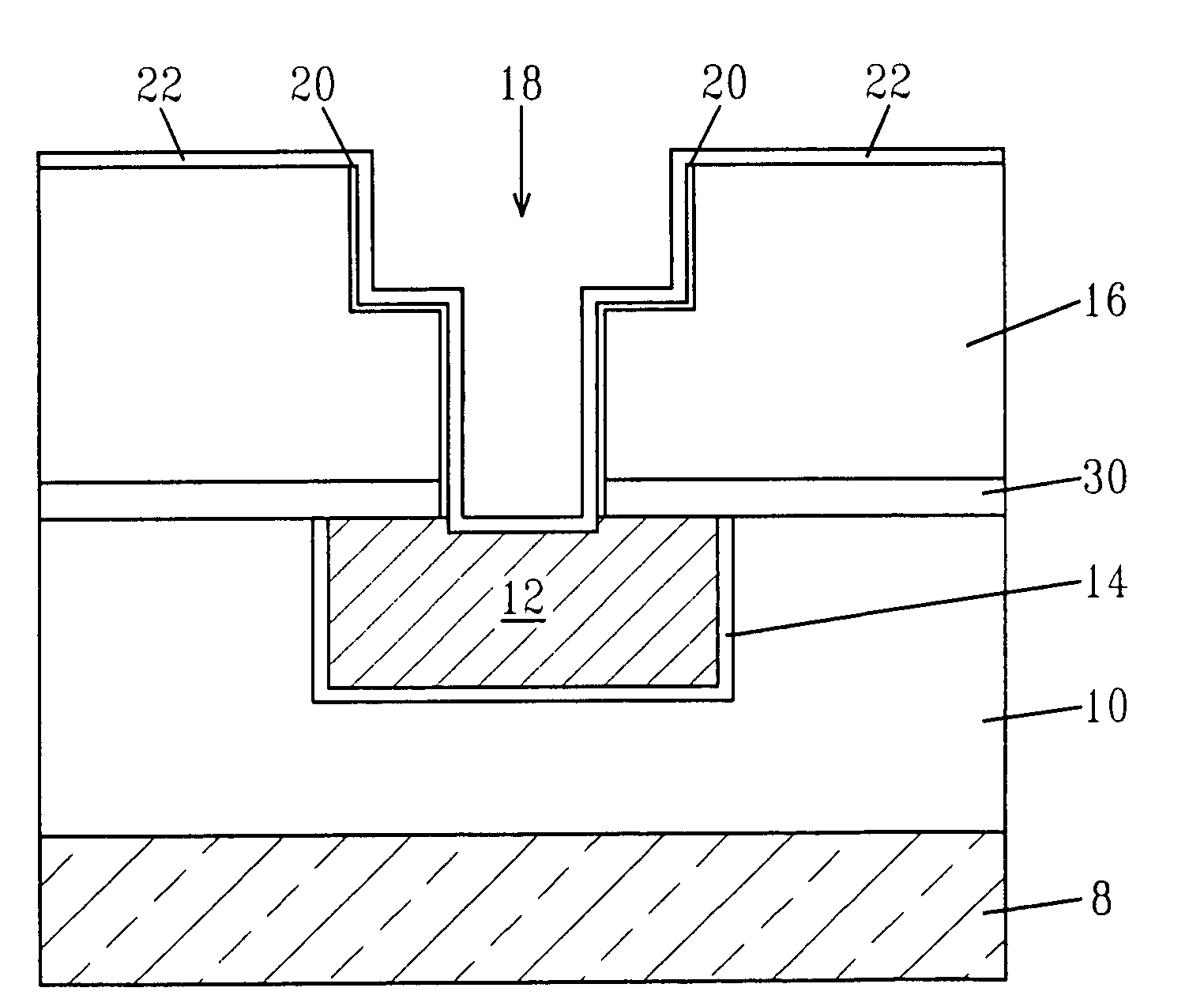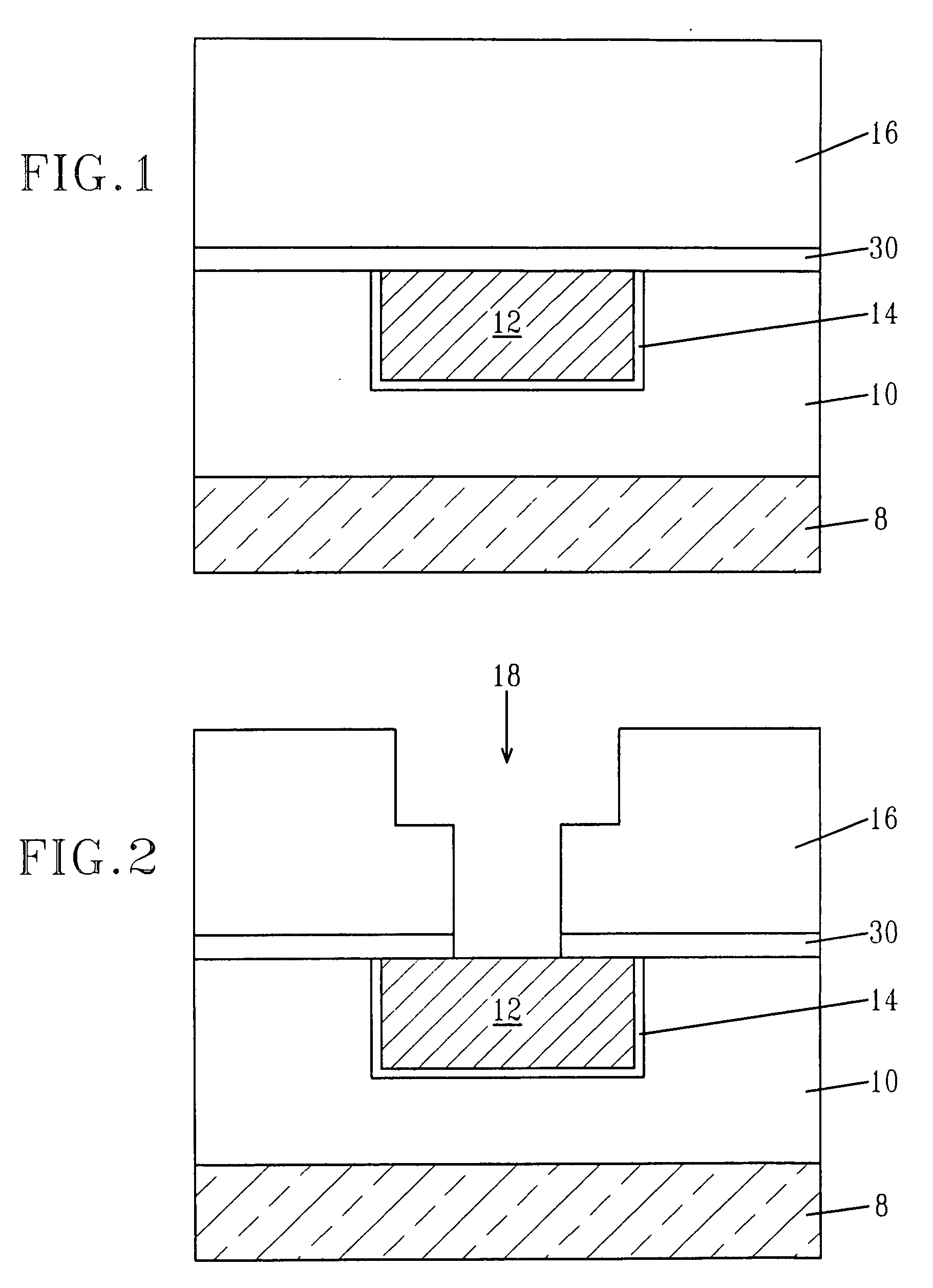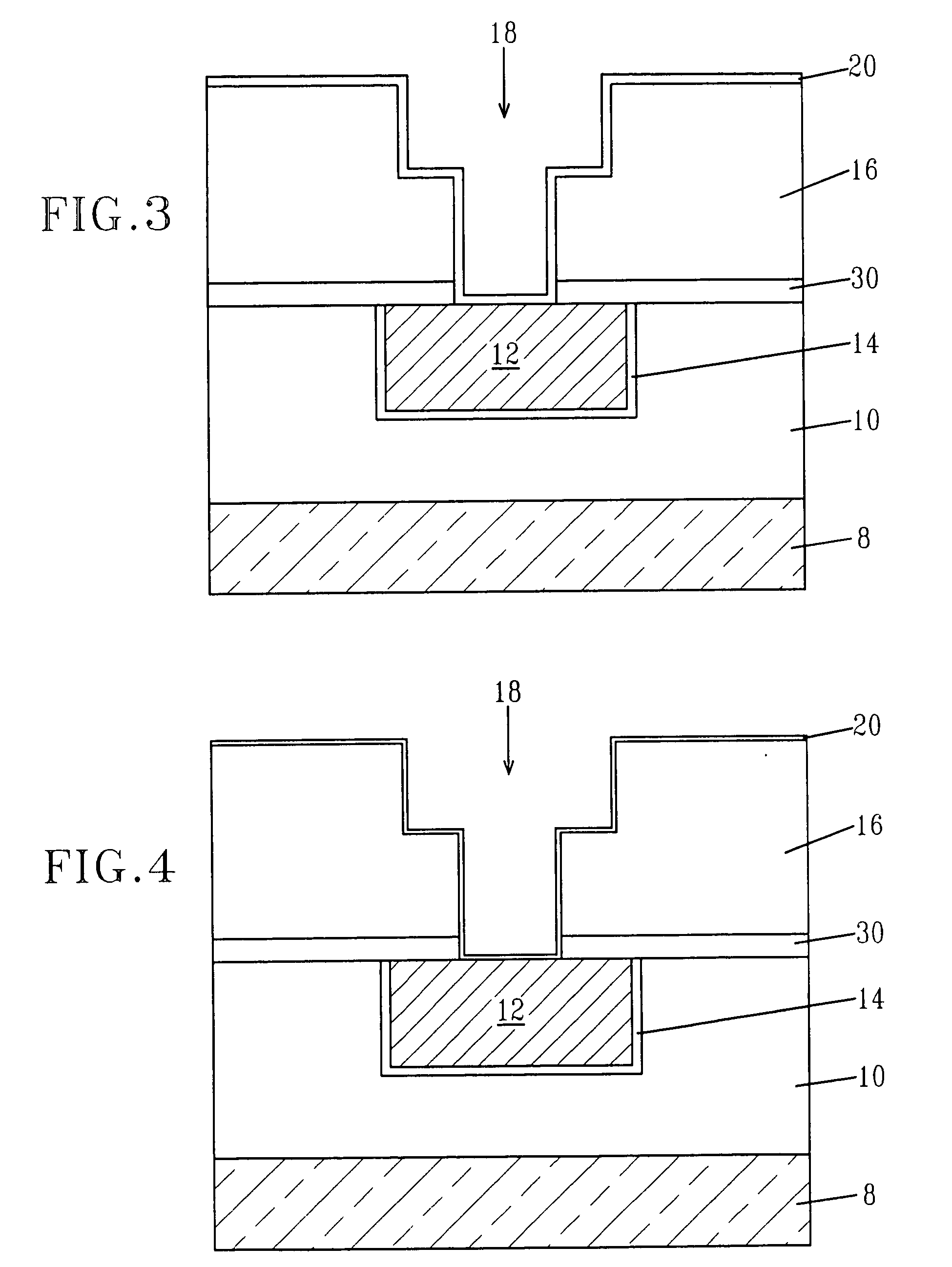Process for forming an electrically conductive interconnect
a technology of electrically conductive interconnects and metallic interconnects, which is applied in the direction of basic electric elements, electrical apparatus, semiconductor/solid-state device manufacturing, etc., to achieve the effect of reducing field-induced metal contamination of dielectrics
- Summary
- Abstract
- Description
- Claims
- Application Information
AI Technical Summary
Benefits of technology
Problems solved by technology
Method used
Image
Examples
Embodiment Construction
[0027] In order to facilitate an understanding of the present invention, reference is made to the figures.
[0028] According to the present invention dielectric layers 10 and 16 are provided on a semiconductive substrate 8 such as silicon, silicon-germanium alloys, and silicon carbide or gallium arsenide. The dielectric layer 10 contains electrically conductive lines 12 and can contain a barrier or liner 14 on the bottom and sidewalls the conductive lines 12. Also, typically a capping layer 30 such as silicon nitride is provided on the conductive lines 12. See FIG. 1. Examples of dielectric layers 10 and 16 are silicon dioxide (SiO2), phosphosilicate glass (PSG), boron doped PSG (BDPSG) or tetraethylorthosilicate (TEOS), and more typically low-k dielectrics having a dielectric constant of less than 3.9 such as SILK(available from Dow Chemical), SiCH(available from AMAT under the trade designation BLOK), SiCOH(available from Novellus under the trade designation Coral, from AMAT under ...
PUM
 Login to View More
Login to View More Abstract
Description
Claims
Application Information
 Login to View More
Login to View More - R&D
- Intellectual Property
- Life Sciences
- Materials
- Tech Scout
- Unparalleled Data Quality
- Higher Quality Content
- 60% Fewer Hallucinations
Browse by: Latest US Patents, China's latest patents, Technical Efficacy Thesaurus, Application Domain, Technology Topic, Popular Technical Reports.
© 2025 PatSnap. All rights reserved.Legal|Privacy policy|Modern Slavery Act Transparency Statement|Sitemap|About US| Contact US: help@patsnap.com



